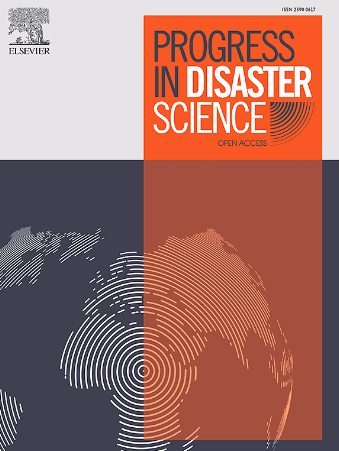Ensemble weather-runoff forecasting models for reliable flood early warning systems
IF 3.8
Q3 ENVIRONMENTAL SCIENCES
引用次数: 0
Abstract
Flood early warning systems often rely on a single hydro-meteorological forecast, which can limit reliability. Recent advances in deep learning (DL) offer promising improvements due to their low computational cost, enabling the generation of ensemble forecasts. This study investigates how to process multiple weather-runoff forecasts to improve model performance in predicting extreme events. We applied DL-based weather-runoff forecasting in river stations located at the foot of the Andes Mountains in Chile. The models couple a near-future global weather forecast with short-range runoff forecasting systems based on Long Short-Term Memory (LSTM) cells. Meteorological and geomorphological input variables commonly used in hydrological models were selected. Training and validation used ERA5 data, while NCEP-GFS data were used for testing and real-time operation. Model performance was evaluated using the Kling-Gupta efficiency (0.6–0.8) and Nash-Sutcliffe efficiency (greater than 0.9). The threat score index, which assesses the model's ability to predict threat peak flow exceedance, ranged between 0.6 and 0.8. The best-performing models were analyzed probabilistically to quantify uncertainty. Finally, we introduced the concept of conditional probability to estimate the likelihood of exceeding a threat peak flow, providing a basis for raising alerts and improving decision-making under uncertain conditions.
可靠洪水预警系统的综合天气径流预报模型
洪水预警系统通常依赖于单一的水文气象预报,这可能会限制可靠性。深度学习(DL)的最新进展提供了有希望的改进,因为它们的计算成本低,能够生成集合预测。本研究探讨如何处理多个天气径流预报,以提高模型预测极端事件的性能。我们在智利安第斯山脉脚下的河流站应用了基于dl的天气径流预报。该模型将近期全球天气预报与基于长短期记忆(LSTM)单元的短期径流预报系统相结合。选取水文模型中常用的气象和地貌输入变量。训练和验证采用ERA5数据,测试和实时操作采用NCEP-GFS数据。采用Kling-Gupta效率(0.6-0.8)和Nash-Sutcliffe效率(大于0.9)对模型性能进行评价。威胁得分指数评估了模型预测威胁峰值流量超出的能力,范围在0.6到0.8之间。对表现最好的模型进行概率分析,以量化不确定性。最后,我们引入了条件概率的概念来估计超过威胁峰值流量的可能性,为不确定条件下的预警和改进决策提供了依据。
本文章由计算机程序翻译,如有差异,请以英文原文为准。
求助全文
约1分钟内获得全文
求助全文
来源期刊

Progress in Disaster Science
Social Sciences-Safety Research
CiteScore
14.60
自引率
3.20%
发文量
51
审稿时长
12 weeks
期刊介绍:
Progress in Disaster Science is a Gold Open Access journal focusing on integrating research and policy in disaster research, and publishes original research papers and invited viewpoint articles on disaster risk reduction; response; emergency management and recovery.
A key part of the Journal's Publication output will see key experts invited to assess and comment on the current trends in disaster research, as well as highlight key papers.
 求助内容:
求助内容: 应助结果提醒方式:
应助结果提醒方式:


